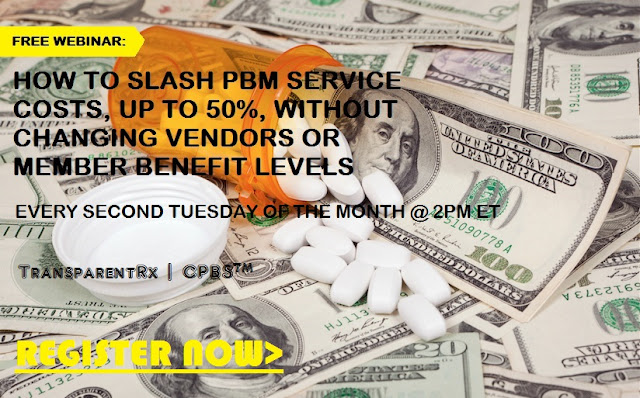Taking a More Active Role: The Main Ingredient for Controlling Prescription Drug Costs
 |
| Learn More |
On a larger scale, employers know they can’t really do anything about the cost of drugs unless the government steps in, said Cheryl Larson, vice president of the Midwest Business Group on Health. But what they can do is review the performance of their PBM and work off that to manage costs.
Employers are frustrated with the current system, she added. But “a lot of large employers don’t want to disrupt the environment they’re in,” she said. “They don’t want disruption for their employees and family members.”
Employers are responsible for finding the best benefits they can to provide high quality cost options for employees, she said. Included is the PBM contract, for which many employers is vague yet ironclad.
“It’s all about the contract,” she said. “You need to demand transparency, and you need to negotiate financial and nonfinancial contracting terms for both direct and indirect revenues for the PBMs administering your plan.”
For instance, if a consumer’s co-pay at a pharmacy is more than the cost of the drug, PBMs often utilize a clawback practice and the consumer still pays the co-pay. The remainder then goes back to the PBM, not the employer or the patient.
The More In-House Approach
Caterpillar Inc. is one example of a large employer that took an active role and did something disruptive to deal with pharmacy spend. “We carved out a lot of the strategic decisions PBMs make on behalf of employers and made them ourselves,” said Todd Bisping, global benefits manager at the Peoria, Illinois-based heavy equipment manufacturer. This shift of strategic power began in the mid-2000s, he said.
Caterpillar opted to build its own networks — that is, determine which pharmacies to contract with and give its members access to — rather than relying on a PBM to do so. It decided to determine its own pricing methodologies in contracts rather than using PBM-negotiated drug prices. It also designed its own formulary, a list of brand name and generic prescription drugs that employees covered by a specific health care plan can use.
Caterpillar still uses a PBM for tasks like prior authorizations, customer support lines and some step therapies. Over the past 10 years, Caterpillar slowly brought more elements in-house. It started in 2005 when Caterpillar began implementing changes in the way it did formularies and continued over the next decade to include changes in supply chain. A team of professionals managed the process, including doctors who help with the clinical aspects of the design, a third-party pharmacy consultant, the Caterpillar benefits team and their PBM.
When Caterpillar began directly negotiating with pharmacies, the largest hurdle was finding someone willing to partner with them. “No one was really contracting directly with pharmacies in the self-insured employer space, ” said Bisping. But “that’s how you bring innovation into the market.” In 2009, Walmart was the first pharmacy to partner with them, he added.
One major aspect of these first contracts was dealing with the transparency issue. While many companies mean transparency in rebates when they use that term, Caterpillar adopted a broad definition, one that took into account transparency in any revenue associated with drug spend, like marketing fees.
Caterpillar’s decision to take over these strategic functions saved the company hundreds of millions of dollars since its inception in the mid-2000s, and it’s saved the employees tens of millions of dollars, said Bisping. The company spent less in 2015 than in 2005, he added. Since then, they’ve seen costs rise but it’s still much less than the industry average, he said.
Fewer than 10 companies have adopted the same strategy as Caterpillar, according to Bisping. It’s a complex, disruptive process that requires commitment and culture change. Also, many companies outsource a lot of their expertise, so they don’t necessarily have the expertise in-house. But, despite the time commitment to get this internal function operating, he’d recommend it to other companies that want to control drug costs.
Caterpillar accomplished its positive drug price trend without relying on HDHPs or cost-shifting. “We didn’t pass our costs onto employees to accomplish that,” he said. “In that period, we didn’t make any design changes because we were controlling the cost.”
[Source]









